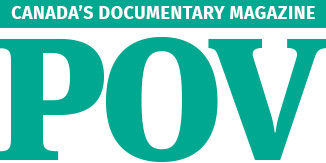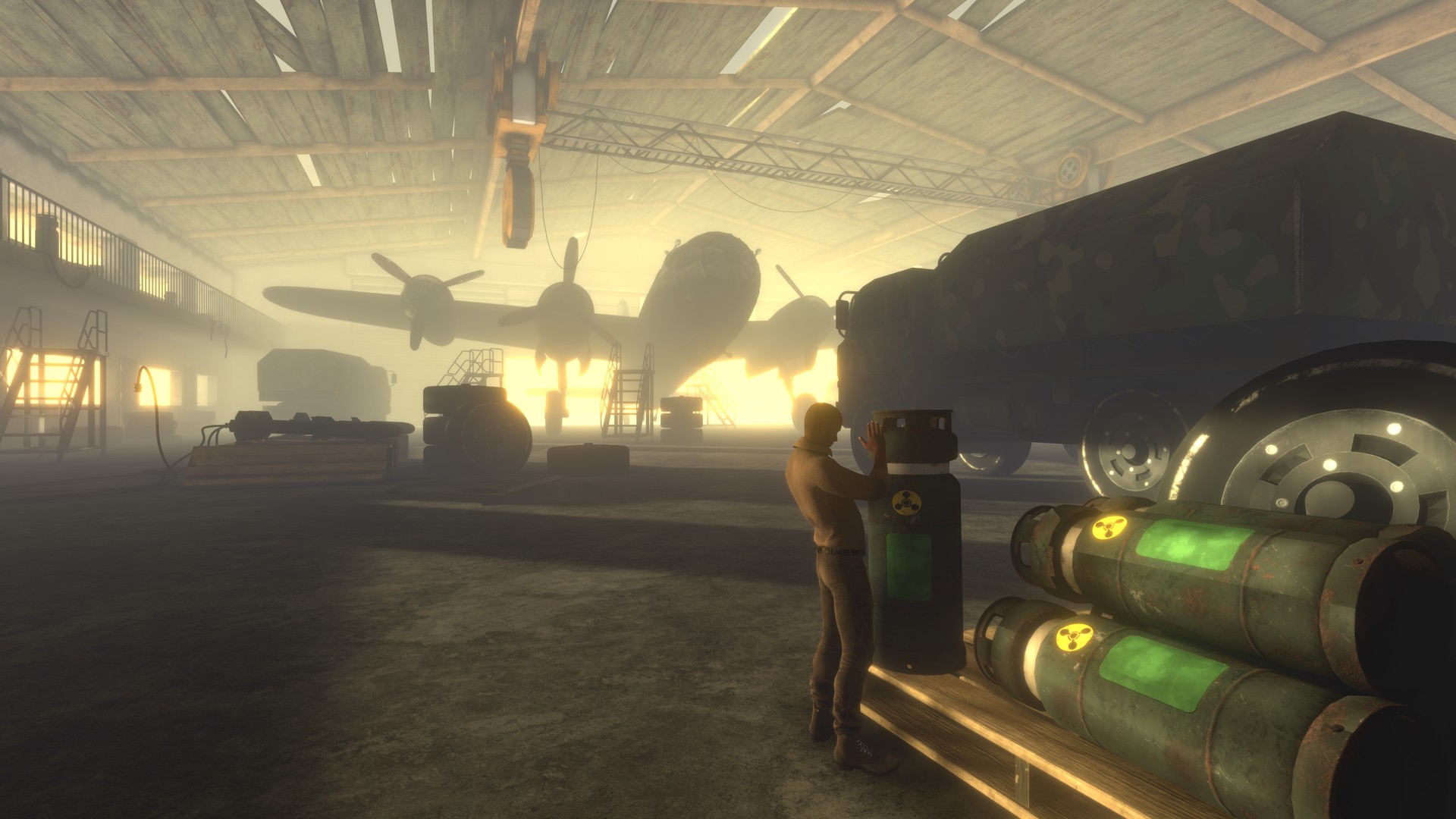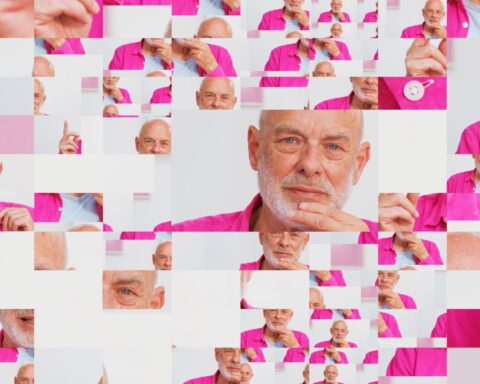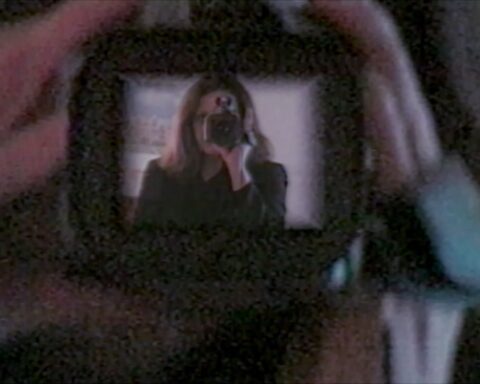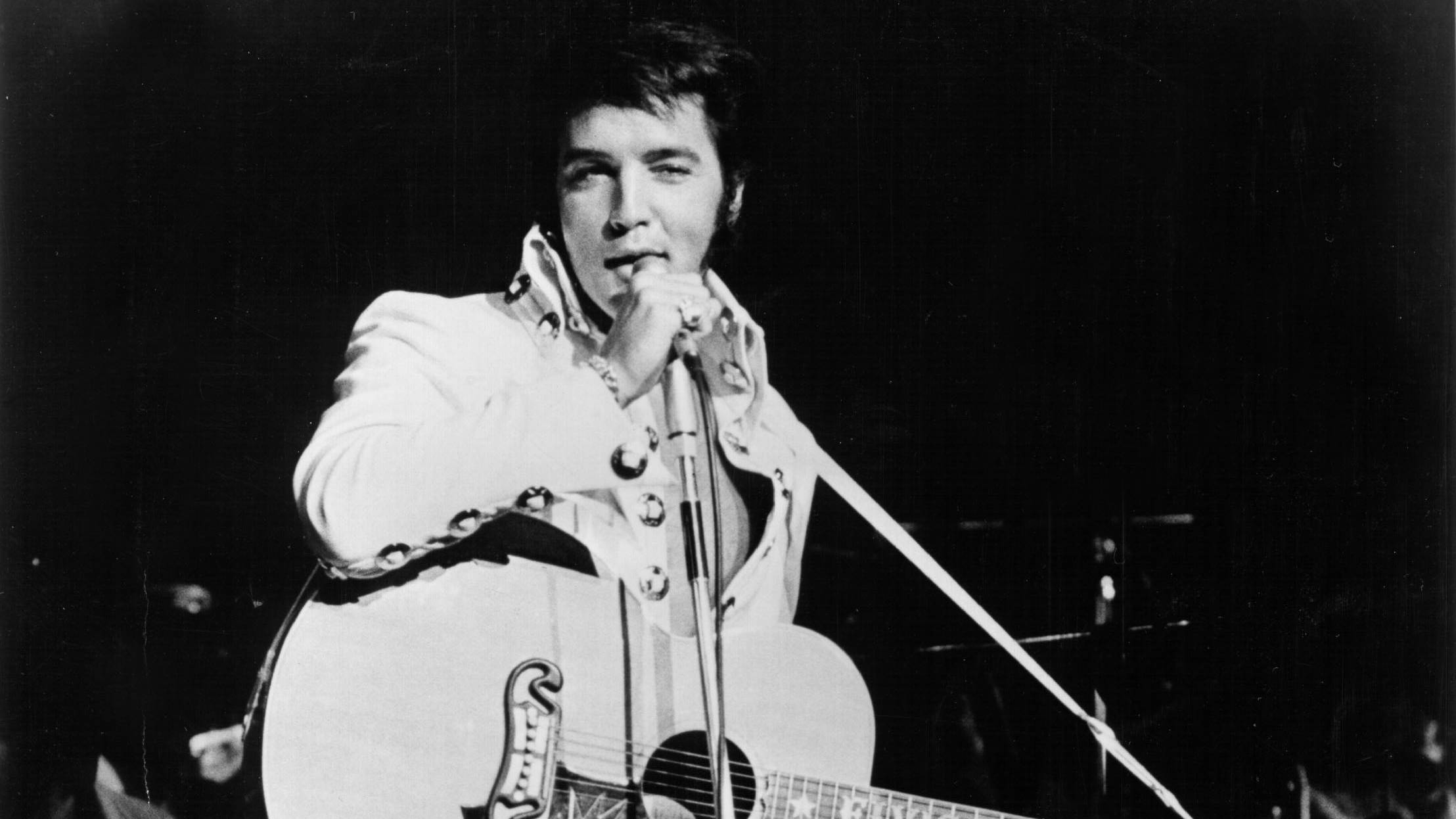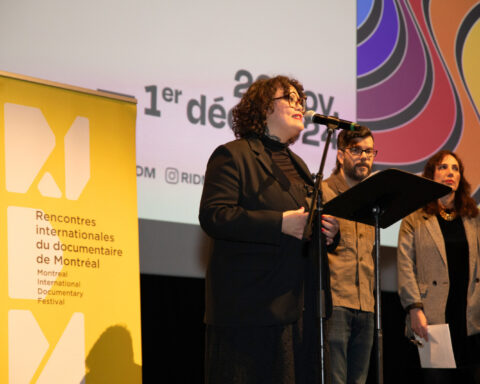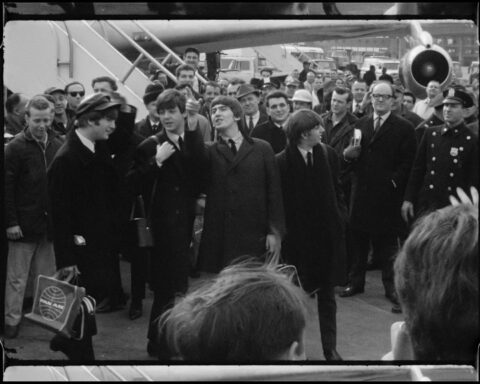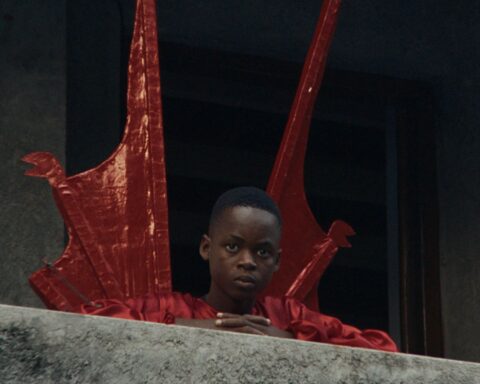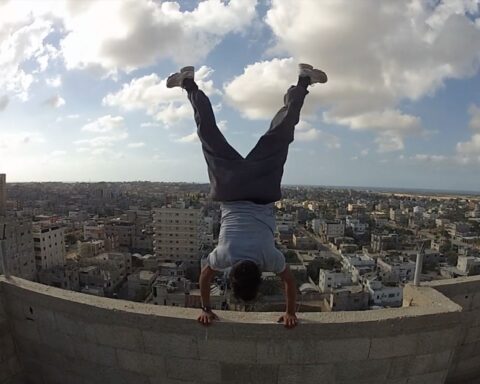Five years ago, filmmaker Ann Shin caught the world’s attention with the story of a chance encounter and a split-second decision that transformed lives. Her short film My Enemy, My Brother offered the story of Najah and Zahed, Iraqi and Iranian soldiers, respectively, who encountered each on the battlefield amid a long-running and deeply polarised civil war. Rather than see their fellow man as the enemy “other” as each man had been trained to do, Najah and Zahed recognised a common thread of humanity and chose compassion over violence. Audiences were enrapt with this compelling story, which went on to be released through New York Times Op-Docs, land spots on both the Oscar shortlist and Canada’s Top Ten, and spawn a feature documentary of the same name.
Shin lets audiences experience the world of My Enemy, My Brother anew in Eye of the Beholder. This immersive virtual reality (VR) experience puts users in the shoes of soldiers like Najah and Zahed and challenges them with the weight of assessing a new face in unfamiliar settings. Available in headset and desktop formats, Eye of the Beholder offers a training ground for empathy and compassion as it asks users to put aside their prejudices and preconceptions, just as the soldiers did years ago. Users have 20 minutes to experience the disorienting adrenaline-rush of the battlefield in this fictional encounter. One should emerge from the headset seeing the world a little differently if playing the game to win.
POV spoke with Shin ahead of Eye of the Beholder’s release to discuss her experience taking My Enemy, My Brother across different formats and exploring new modes of shared experiences through interactive storytelling with her work at Fathom Media.
POV: Pat Mullen
AS: Ann Shin
This interview has been edited for brevity and clarity.
POV: When you first had the idea to tell the story of My Enemy, My Brother, did you plan to explore it across so many forms?
AS: I knew I wanted to do a feature doc at first. It started as a short, and then that helped us get the funding for the feature. While we were developing the feature, I was struck by the decision that Zahed made in the battlefield. It was a very kind of dramatic moment where he chanced upon an enemy soldier who’s still alive. He had to decide whether he was going to shoot him like he’s tasked to do, or if he was going to help him. I was struck by the fact that he decided to risk his own life and help Najah at that instance.
That kind of decision is something that we all face, at some point in our lives, whether it’s in a schoolyard, in a back alley, or at the grocery store. This moment asks if you will recognize the humanity in the other person. This VR experience allows you to confront things about yourself more easily than in real life. For instance, could you be biased or prejudiced in the way you see others? When you play this game, it allows you to sit with your reactions in this fictional world, and hopefully become a more compassionate and open person in real life. The common theme is humanity.
Eye of the Beholder VR Game Trailer – Fathom Film Group from Fathom Film Group – Ann Shin on Vimeo.
POV: How does Eye of the Beholder fit into the genre of first-person shooter games?
AS: It looks like a first-person shooter at first. We wanted to subvert the war game genre. You find yourself in a bunker, and the sounds of war are around you. There’s someone else in the bunker, and you don’t know who they are and whether you can trust them. People will be caught up in the game at first, busy trying to figure out the world and how to move in it, and how to get out alive. But at some point in the game there will be an ‘a-ha’ moment where people understand that it’s not about who gets out first, but about how they treat the other person—that is the key to ultimate success. Hopefully, that’s the takeaway message that carries over into the real world.
POV: How do you go about building the world for a VR experience?
AS: We worked with a number of developers and built the world, which is a desert area. We didn’t want it to feel like any one particular country, so we built this world with a history of two societies that had an older political system. There are two factions: there’s a monarchy and a civilian-led government faction that is trying to take control of the country. The premise is a civil war situation, so no one is clearly in the right or the wrong here. There have been atrocities enacted on both sides. We built an alternate world with developers and then created a scenario and a setting that felt familiar to shooter games, but you don’t get a gun in it until later. It emulates a war game environment, but while subverting the genre.
POV: What are some of the challenges of getting a project like this one off the ground?
AS: We originally were hoping to release the VR along with the feature film, but we had a beta then [when the featured premiered at Hot Docs in 2017]. It’s increasingly difficult to do this kind of project anymore because the funding has changed. It used to be that we could get experimental digital media projects funded through various funding bodies like CMF [Canada Media Fund] or the OMDC [now Ontario Creates], Bell Media was a big supporter of this project. What we witnessed in the time between the inception of this project, getting the funding together for it, and then working on it, was a radical change in the whole industry with its views on VR and games in general as cross platform strategies to film. That’s an interesting experience for filmmakers—doc filmmakers, particularly—because in the early years, there was a lot of funding for cross-platform digital projects and a lot of funding for interactive websites, like we had for The Defector. We did an interactive website that took you into the experience of what it’s like to be in North Korea. But the appetite for those kinds of interactive websites [diminished] during the trajectory of this production of this project.
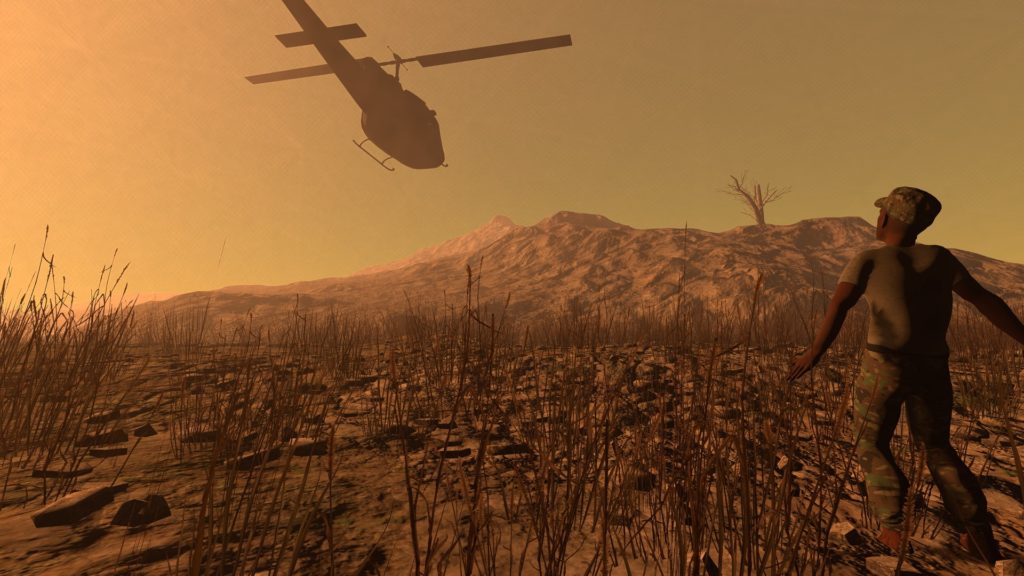
POV: What do you think is behind this shift?
AS: The brands, the platforms—they’re going online. They’re looking for linear content and not interactive websites or games that sit outside their platforms or their websites. It makes sense because they’re competing against streaming giants. This project was conceived before that transformation in the industry.
POV: Is there still a place for VR?
AS: The industry is slowly maturing and people are asking, what are the actual avenues for revenue? If Fathom were to continue in VR, we would be doing VR or desktop games that people can access. The strategy that people use now is to make cross platform content with a brand that’s well known, or a game concept that is strong in and of itself. There are many artists and game designers using VR and other new media to create games for change— games that will encourage people to see the world in a different way.
POV: How did COVID and various shutdowns effect the production?
AS: We were able to work remotely because a lot of freelance developers right work from their own systems—even larger companies like Pixomondo that does CG and various 3D avatar work for series like The Mandalorian. It was hard not having face-to-face meetings or going through one version of gameplay versus another version. That was definitely a drawback, but it wasn’t as difficult as film production and having to be on set shooting in person. We did our motion capture prior to COVID.
POV: I always find myself asking where VR sits in the documentary world. Where do you see VR within the non-fiction spectrum?
AS: I think it is important to have a full range of expressions within a medium. A medium like VR or gaming is largely for entertainment, but to use a medium to help people learn or to experience other kinds of reality is an important tool. It would be great for documentary to utilize VR and create experiences that immerse people in other realities and help them empathize further with other people.
POV: How do Najah and Zahed feel about being in a game?
AS: They were very positive about it. Zahed and Najah talk about how war is a monster and they have both felt what it’s like to be prejudged. They like the idea of an experience that will help someone question their preconceptions about other people. The characters in the game are of indiscriminate ethnic background or nationality, so it’s meant to make you see how you might prejudge a character, just by their appearance or the situation you meet them in.
POV: It still sounds like a very appropriate game for 2020!
AS: When the world is more polarized between very conservative right-wing views and very left-wing views, one hopes that this kind of experience would help people see that there’s a commonality among us all. It can help them see a sense of human respect. A trust in humanity is something that we hope this game encourages. There is a certain kind of distrust created by COVID with how we can’t touch one another while navigating the sheer physical restrictions. We can’t walk close to one another on the sidewalk; you have to stay six feet apart from other people, so you have to avoid them. It’s not that we’re distrusting people but the precautions we have to take to help one another preserve our health are alienating and distancing. I hope that games like these might help people feel that we’re all on the same team. We’re all on Team Human.
Eye of the Beholder is now available on Steam. The feature film My Enemy, My Brother premieres on Sundance Now on Monday, December 21, 2020 in the United States and Canada.

